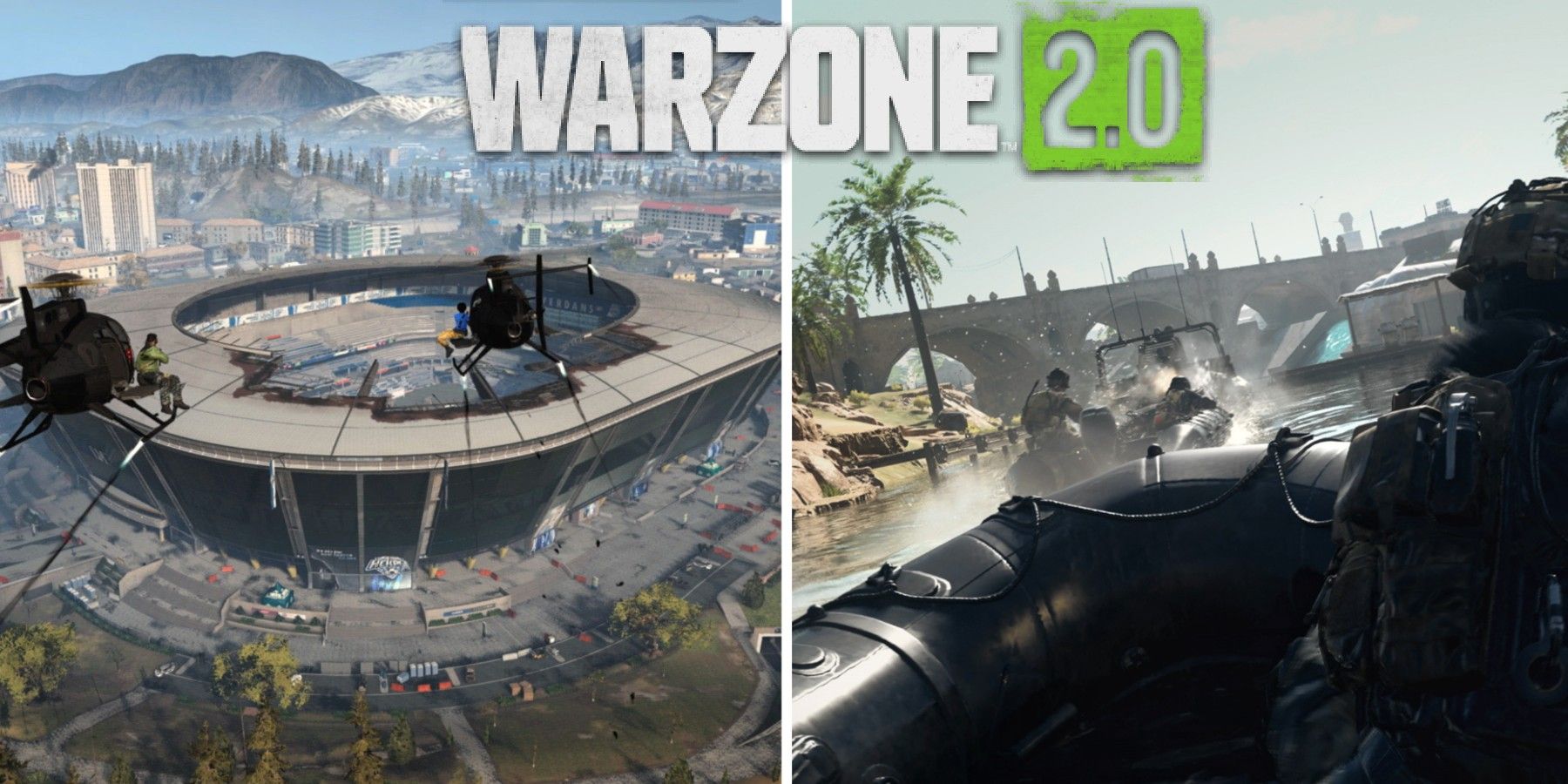The first Call of Duty: Warzone dropped at the most perfect opportunity a developer could ask for. While the pandemic was, and continues to be, a terrible event, the video game industry has boomed during this period. With more people at home, the gaming industry increased its user-base exponentially, and during this time, titles like Warzone helped friends come together online when they couldn't do so in person. Call of Duty: Warzone 2 has a lot to live up to, and one of its biggest points of comparison will be its new map.
Named Al Mazrah, Call of Duty: Warzone 2's new map takes the groundwork laid by Verdansk and Caldera, and expands on those foundations in a number of ways. From more expansive points of interest, to more varied map design, Al Mazrah makes a lot of improvements over its predecessors, but some hardcore Warzone fans might want a more in-depth comparison of the iconic original Verdansk and the newcomer Al Mazrah.
How Warzone 2.0's Al Mazrah Compares to Verdansk
From the offset, the most obvious point of comparison between Al Mazrah and Verdansk is the maps' overall sizes. While Verdansk is a sizable map, Al Mazrah is technically bigger, and by quite a bit. Al Mazrah is larger on all sides, with its south stretching into the coastline with a few explorable islands and towns, its north encompassing an oasis, its east covering some additional structures, and its west being home to a large quarry and port area.
In the same amount of square footage, Al Mazrah has a much more varied and dense collection of POIs. While Verdansk had quite a few POIs, the space in between them was often filled with large open areas with minimal structures. Though this kept the POIs memorable, it did mean that a lot of space was taken up by areas with no cover. Al Mazrah, on the other hand, is littered with a variety of different structures between its POIs, ensuring that there's plenty of cover everywhere.
Al Mazrah also has much greater visual variation than Verdansk. Releasing on last-gen consoles, the first Warzone looked good, but it was clear it was running on outdated hardware. With the power of next-gen hardware, Call of Duty: Warzone 2 manages to be a lot more visually varied than its predecessor. Rather than a green tint being played to all of Verdansk, and similar-looking, gray buildings jotted throughout, Al Mazrah has a much more vibrant color palette, with plenty of blues, yellows, oranges, and whites being used across the map. This visual variation also extends to the map's architecture, with skyscrapers, houses, caves, towers, observatories, fortresses, and shipyards all looking completely distinct from one another.
While Verdansk integrated a few classic Call of Duty maps into its overall design, such as Boneyard, these were few and far between. Al Mazrah, on the other hand, has classic Call of Duty references galore. There are several classic Call of Duty maps integrated into Al Mazrah, all of which are iconic in their own right. Fans should be able to find Terminal, Shipment, Rust, Dome, Highrise and more, all expanded and tweaked for Warzone 2's more explorable nature. One of the biggest changes from Verdansk is that water now plays a big role in Al Mazrah's layout. With a river stretching across the entire map, players can use the game's new swimming mechanics to get the drop on their enemies in new and exciting ways.
Call of Duty: Warzone 2 is available now for PC, PS4, PS5, Xbox One, and Xbox Series X/S.


(2).jpg)